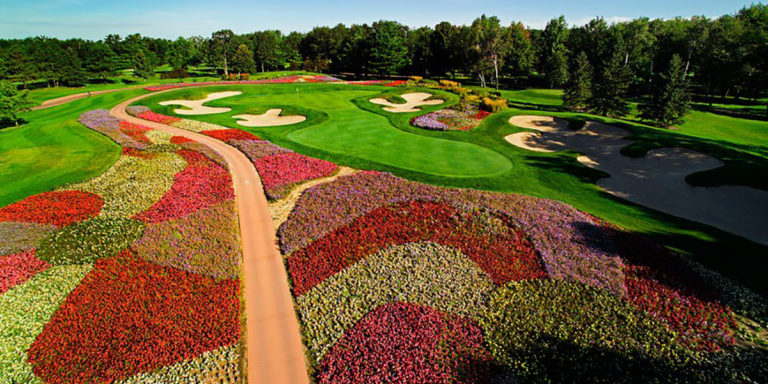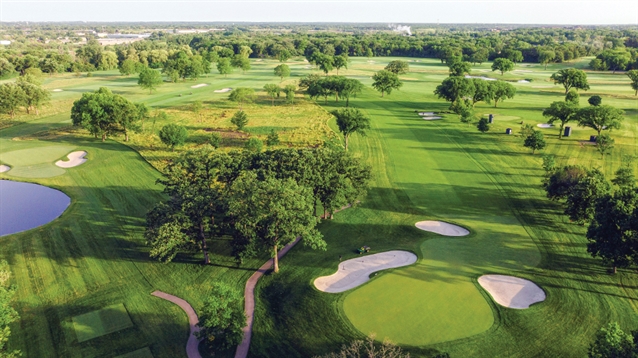Drew Rogers is renovating the Hugh Alison-designed golf course at Knollwood Club near Chicago, Illinois. In 2017, having renovated tees and bunkers and regrassed greens, Knollwood hired Rogers to develop a master plan for future work.
This article first appeared in the October 2022 issue of Golf Course Architecture.

“Our primary and immediate focus was directed at the site itself… the setting for the holes,” said Rogers. “To us, that stood as the key missing piece from earlier efforts – and those elements would ultimately make the difference in how the course should be restored.”
Rogers studied old plans and aerials.
“We sized up Alison’s early design touches, assessing the effects of scale and proportion and, of course, the plant materials that would best fit the intended design expression and complement the pastoral site,” he said.
In September 2018, Rogers began working with superintendent Drew Barnett to implement the plan, including the addition of forward tees and some initial work in restoring Knollwood’s prairie-like landscape. That winter, tree removal and thinning of invasive buckthorn undergrowth began opening hole corridors that were more aligned with Alison’s descriptions and intent.
“We removed all the lower quality trees that disrupted views and covered up higher quality trees,” said Rogers. “We also took steps that would allow for better playability and visibility within most hole corridors, and across the site as a whole – this essentially paved the way for future course improvements, including the rebuilding of bunkers and regrassing fairways, plus their widening and realigning.
“When we could finally feel the holes, presented again in full scale, we then started to address some of the spacious void in a different way, by introducing native fescue spaces in out of play areas.
“So now, along with the thinning of trees, including retaining old specimen elms, oaks and hickory, we also have another layer of texture and colour with the grasses – all balanced with the new fairway lines and grand bunkering.”
Barnett said: “The work has been positively accepted. The slow maturation process of the fine fescue did cause heartache for some members, but with full maturity of these areas the membership has almost fully embraced the concept. The tree removal was also contentious at the early stages but now the membership enjoys the expansive views throughout the property.
“The reduction in primary rough has improved our maintenance practices by allowing us to spend less time cutting rough and a reduction in fertilizer and pesticide usage in the rough.
“Even with the ever-rising costs of plant protectants and fertiliser, our budget has remained the same due to lower inputs in these areas. Our staff can continue with detailed items throughout the property instead of simply mowing over 100 acres of primary rough.”
In August 2022 work turned to tees, fairways, bunkers and greens, and is expected to be complete in November.
“The work on fairways and bunkers would not produce nearly the same effect if not for all the pre-planning and ultimate reset of the landscape,” said Rogers. “The before and after photos stand to tell the stunning story as well as anything we can possibly say or write… those images will speak for themselves.”
Previously, fairways were a mixture of six different turf varieties. The regrassing will produce a slightly different alignment on several holes to accomplish Rogers’ design intent, while bunker work and the remodeling of two greens are being completed to better reflect an original Alison design aesthetic.
“The initial course prep step is one that is often disregarded or skipped entirely,” said Rogers. “After all, tree removal can be rather controversial. But when the site isn’t properly treated to accommodate the design, then all the elements will ultimately be in conflict and the desirable opportunities to do the right thing will be missed.
“The golf course work is more the ‘given’ in terms of expected scope, but the site work is every bit as important if we are to achieve a proper balance.”











